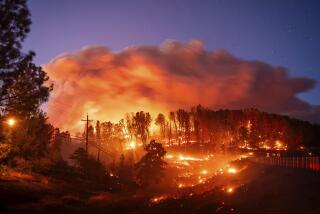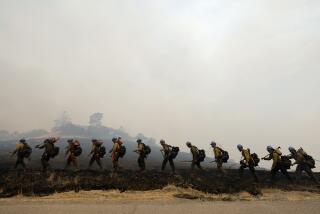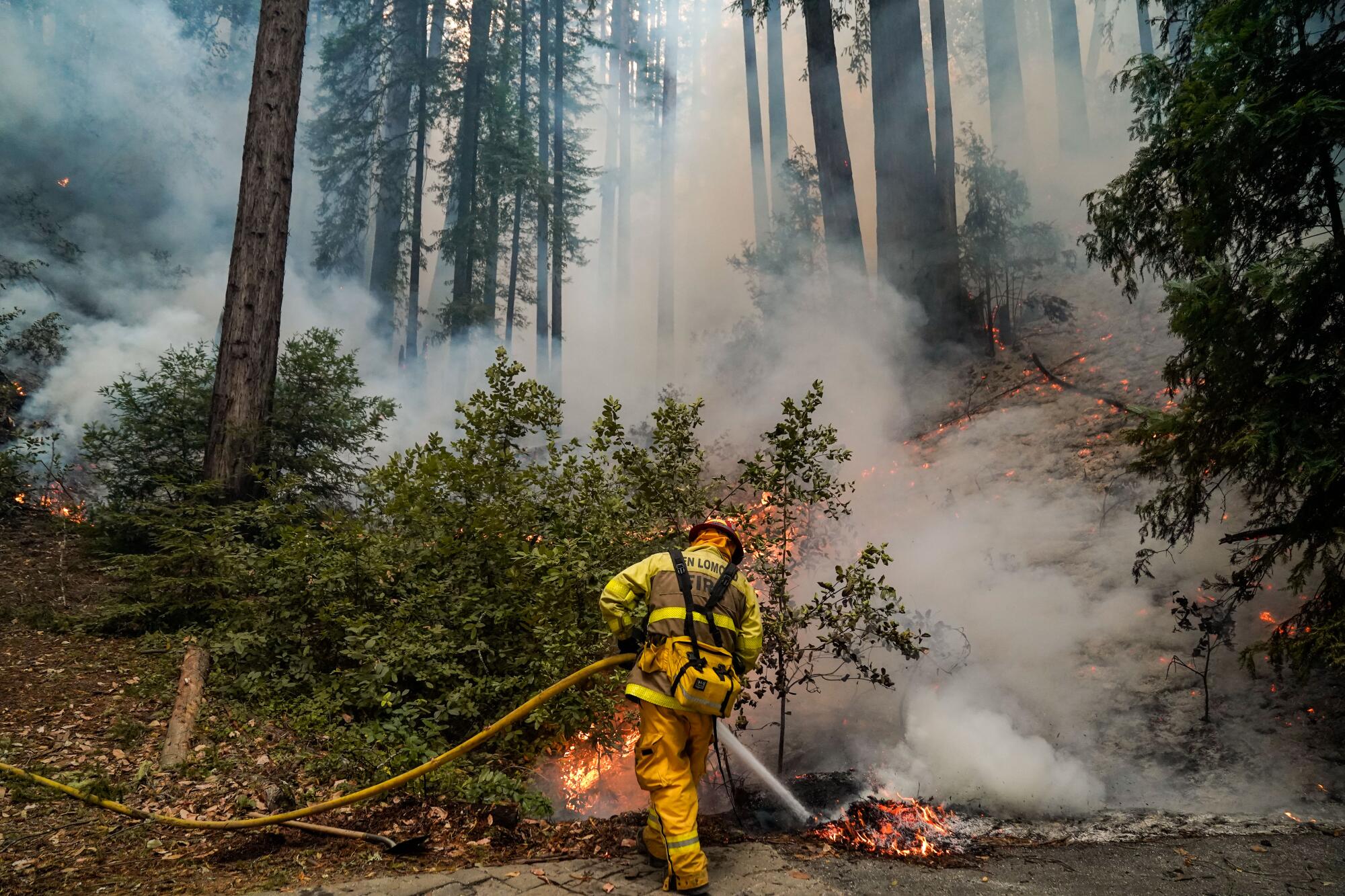
- Share via
BEN LOMOND, Calif. — On Friday night, the tired, equipment-strapped crew of Ben Lomond’s volunteer firefighting team was briefed by the California Department of Forestry and Fire Protection in the mountain town fire station’s airy and unfinished kitchen.
A collection of lightning-sparked fires had merged into one blaze that was raging in the Santa Cruz Mountains to the west.
The firefighters were told that Cal Fire’s models suggested in the next 48 to 72 hours, the fire would move into Boulder Creek’s downtown. If the crews were unable to stop the fire there, Cal Fire would pull its reinforcements and allow the fire to funnel down the valley — through Brookdale, Ben Lomond and Felton — toward Route 17, the high-speed mountain highway that connects San Jose and Santa Cruz.
It was dispiriting news. But local firefighters planned to wage a stand to save the communities, even without the backup.
“No one’s going to stop fighting that fire,” said Menlo Park Fire District’s chief, Harold Schapelhouman, who was in Boulder Creek in the early morning hours of Saturday.
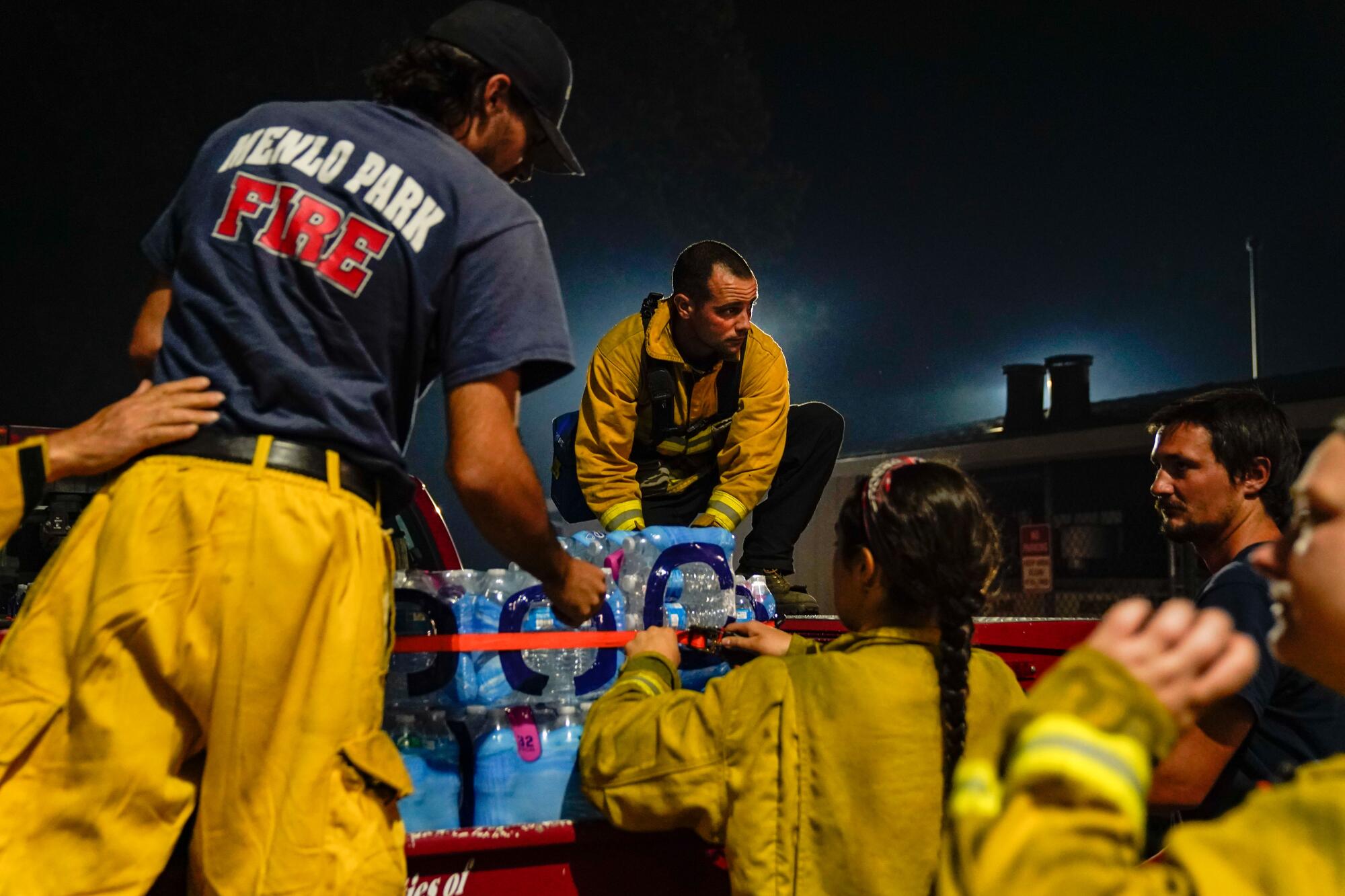
“These guys are going to keep fighting,” he said of the volunteer firefighters. “That’s just what they do. They take the knocks and get right back up.”
The fire, dubbed the CZU Lightning Complex fire, had burned 63,000 acres, destroyed 97 structures and forced the evacuation of about 77,000 people in San Mateo and Santa Cruz counties as of Saturday morning. It was 5% contained.
The massive blaze was one of an estimated 585 wildfires that have together burned nearly a million acres in California since a siege of lightning strikes that began Aug. 15.
The sheer scale and number of fires has placed a strain on firefighting manpower and equipment that some officials have described as unprecedented in recent history, with incident commanders across the state reporting a lack of needed resources.
“Basically, Cal Fire is stripped statewide,” said Edwin Zuniga of Cal Fire, a public information officer for the CZU fire. He said that in addition to relying on local and volunteer crews, officials have ordered out-of-state backup. They’re starting to see the aid trickle in, but it’s been a slow process, he said. With so many fires scattered across California, resources keep getting diverted elsewhere before they arrive.
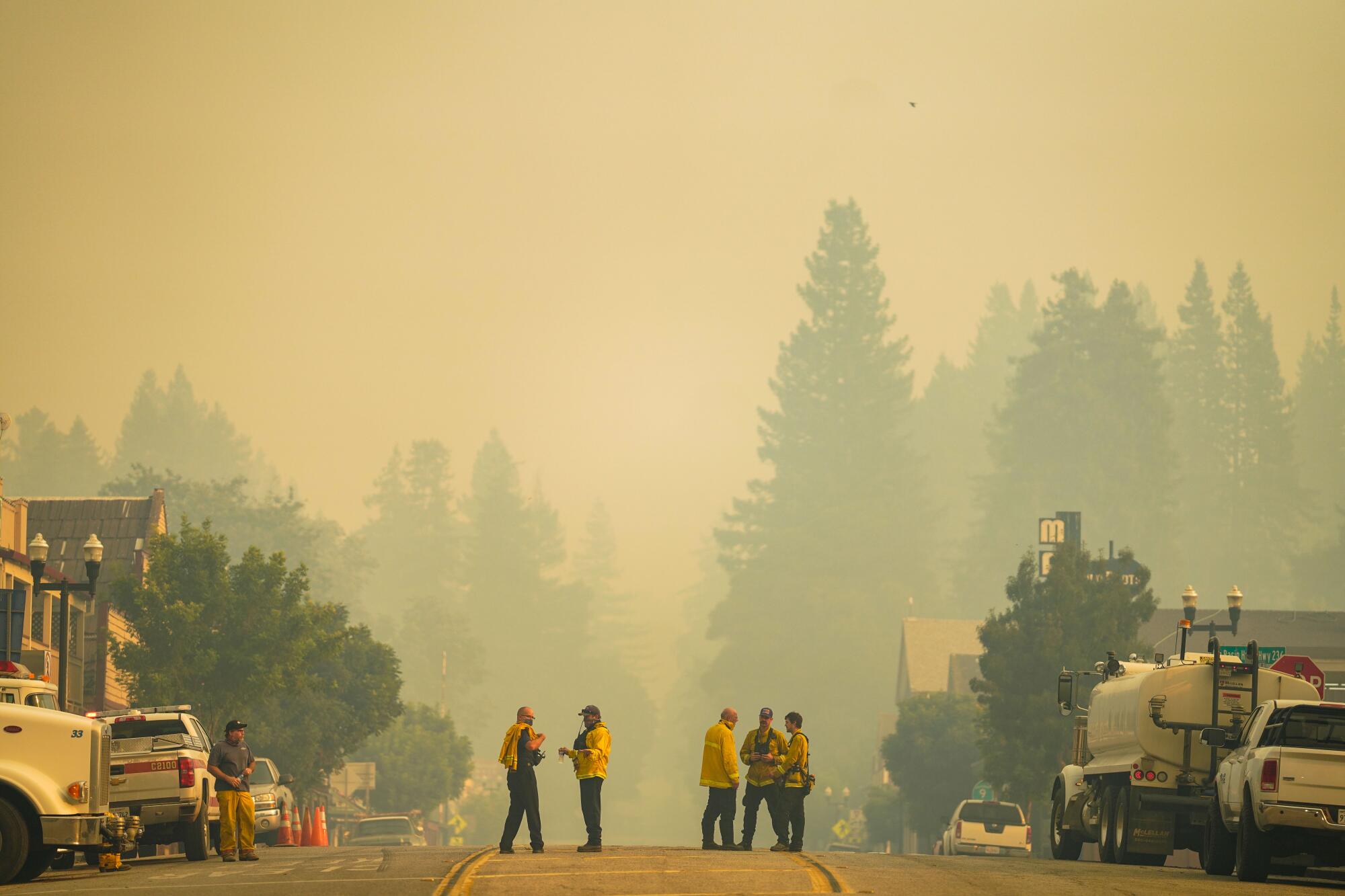
“The issue is, en route, they could possibly be diverted to a higher-priority incident,” he said. “It’s become an issue of priority, so who has more priority over each other, and that’s where those resources are going to be rediverted.”
Firefighting aircraft and crews are being sent to areas where there is the greatest risk for loss of life, officials said.
Schapelhouman’s district is providing reinforcement. On Friday night, his crew brought up a water tender, rig and several pallets of water and Gatorade for the exhausted crews.
They were greeted with cheers.
The men and women fighting the fires in the mountains are a storied crew. Most of them work for other cities and municipalities in the Bay Area — such as San Jose, Berkeley, Palo Alto, Menlo Park and Redwood City — as full-time firefighters and first responders.
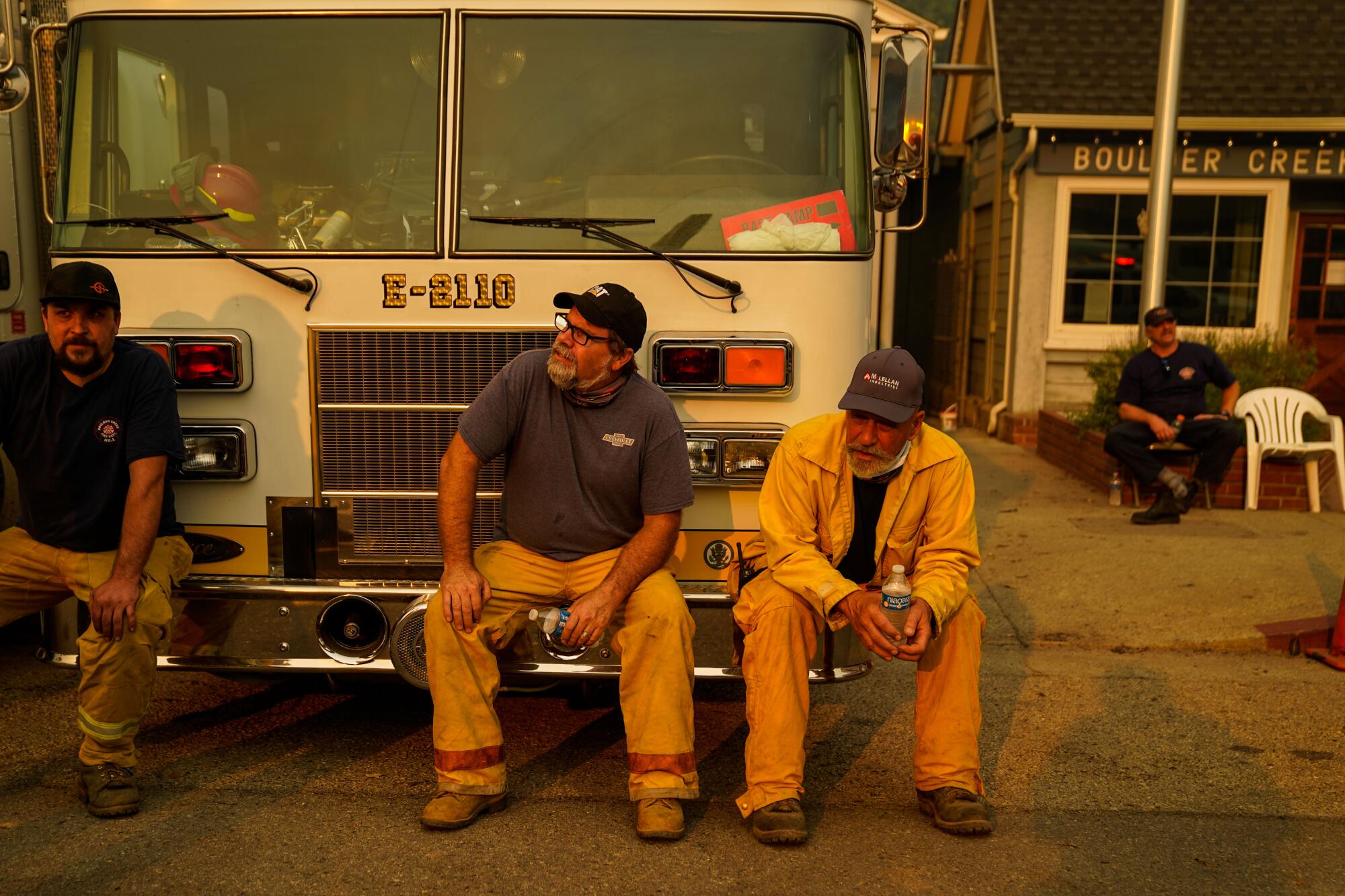
For many, Friday was their day off. But rather than sleep or take shelter, they were slogging through the rugged, mountainous terrain clearing boundaries and dousing fires where they could.
“This is my home. These are our neighbors. There’s no way I wouldn’t be here fighting,” said Todd Ellis, captain of Ben Lomond’s volunteer fire district, referring to the informal designations Cal Fire uses to describe firefighting zones.
Devastated by Cal Fire’s briefing, he said nothing would stop him from fighting for his town.
Carl Kustin, a volunteer with the Boulder Creek Fire District, agreed.
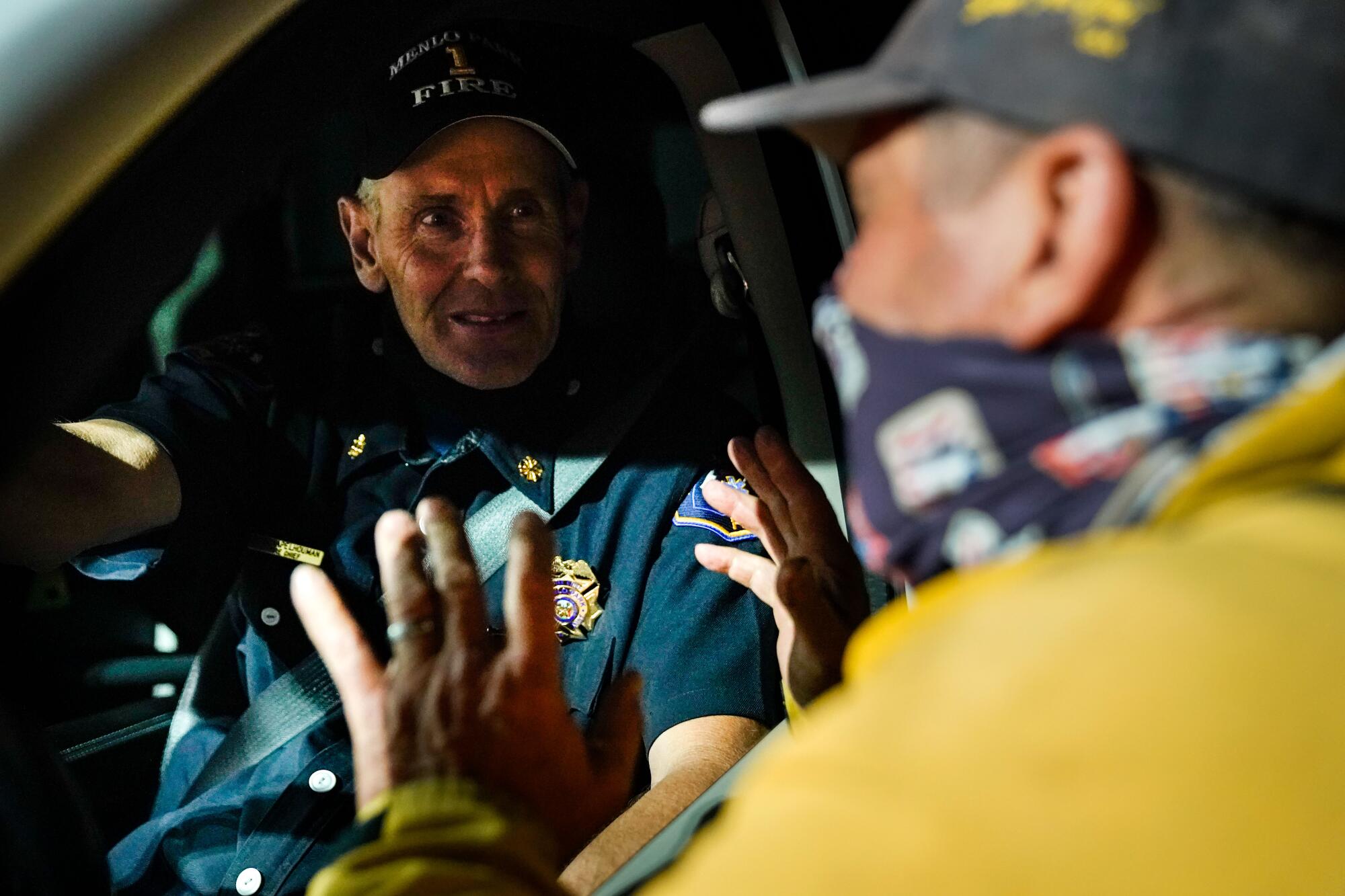
“We don’t do this for money. We do this because we love our neighbors. We love our crews. And for us, there’s nothing more inspiring than helping others and using everything we have to support people and communities,” he said.
Kustin is a legend among the fire departments of these mountain towns. He and Schapelhouman were responders to the Oklahoma City bombing, the Sept. 11 terrorist attacks and Hurricane Katrina, among other major U.S. disasters.
Most of the firefighters have been deployed around the nation as first responders.
But, said Kustin, this time it’s different. “This time it’s personal,” he said.
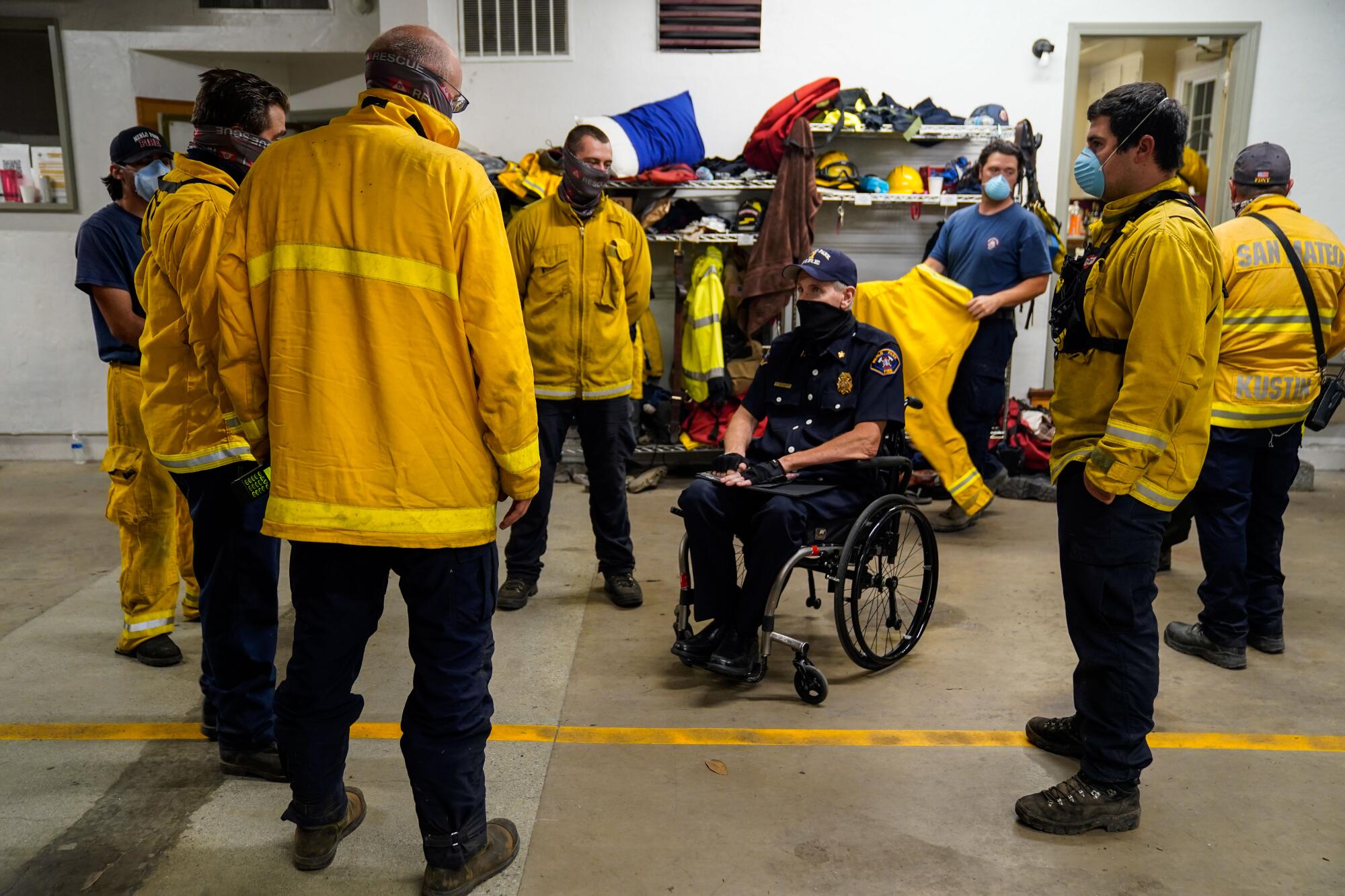
Times staff writer Alex Wigglesworth contributed to this report.
More to Read
Sign up for Essential California
The most important California stories and recommendations in your inbox every morning.
You may occasionally receive promotional content from the Los Angeles Times.

